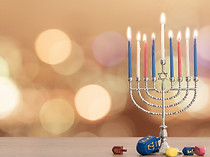Halloween: Unmasking Dark Origins and Cultic Legacy
- Leisa Baysinger

- Oct 6
- 4 min read

Halloween, celebrated on October 31st, traces its lineage to the ancient Celtic festival of Samhain (pronounced “sow-in”), a transitional day marking the end of harvest and the onset of winter. Samhain was not merely seasonal—it was spiritual. The Celts believed that on this night, the veil between the living and the dead thinned, allowing spirits to cross into the mortal realm.
This sacred day in Celtic religion was steeped in cultic rituals:
• Druid priests conducted ceremonies to divine the future, often involving animal and human sacrifices to appease deities and ancestral spirits.
• Bonfires were lit to ward off evil entities and honor the dead, while blood markings on doorposts were used to deter malevolent spirits.
• The infamous “threefold death”—wounding, burning, and drowning—was a sacrificial rite believed to be inflicted on kings or chosen victims.
These practices were not benign seasonal customs but deeply spiritual acts rooted in pagan cosmology, where death, darkness, and divine appeasement converged.
Modern Halloween traditions are echoes of these ancient rites:
Costumes: Originally worn to disguise oneself from spirits, Celts dressed in animal skins or impersonated the dead to confuse wandering souls. This evolved into today’s playful or demonic cistumes, but the spiritual intent was protective and ritualistic.
Jack-o’-Lanterns: The tradition began in Ireland with carved turnips, not pumpkins. These grotesque faces were lit with candles to frighten away spirits. The name “Jack-o’-Lantern” comes from folklore about a damned soul named “Stingy Jack” who wandered the earth with a lantern.
Trick-or-Treating: Rooted in the Celtic practice of going door-to-door for feast offerings, this was a way to honor spirits or seek protection. Later, it merged with medieval Christian customs like “souling,” where beggars asked for soul cakes in exchange for prayers for the dead.
Each of these symbols, though secularized today, carries a spiritual residue—a legacy of appeasement, fear, and communion with the dead.
Today, there are growing numbers of cities that have huge parades celebrating the "day of the dead."
The spiritual imagery of Halloween’s darkness contrasts starkly with the Biblical symbolism of Sukkot, the Feast of Tabernacles. While Halloween embraces shadows, fear, and the unsettling presence of spirits, Sukkot centers on divine protection, joyous dwelling, and the manifest presence of God’s light.
• Halloween’s carved pumpkins with flickering candles invoke warding off or mimicking spirits trapped in darkness—a tradition rooted in deception and fear.
• In contrast, Sukkot calls families to dwell in sukkot—simple, temporary booths open to the sky—symbolizing trust in God’s provision and shelter (Leviticus 23:42-43). The festival is radiant with lulav and etrog, symbols of life, blessing, and gratitude, and rejoicing for the bountiful harvest that God allowed them to harvest.
• The light in Sukkot is not a flicker of fear but a steady light of God’s presence, protection, and joy. It celebrates life’s abundance under the Creator’s care, not a dance with death or spirits.
For believers in Yeshua, Halloween presents a spiritual dilemma. Scripture calls us to be set apart, not conformed to the patterns of the world (Romans 12:2). Participating in a day historically rooted in necromancy, divination, and death veneration contradicts the call to walk in light and truth.
Consider these biblical principles:
• Deuteronomy 18:10–12 warns against engaging in divination, witchcraft, or consulting the dead—practices central to Samhain.
• Ephesians 5:11 exhorts believers to “have no fellowship with the unfruitful works of darkness, but rather expose them.”
• 1 Corinthians 10:21 reminds us: “You cannot drink the cup of the Lord and the cup of demons too.”
• Critically, God warns us that we cannot make holy or clean what He has declared unholy or unclean (see Isaiah 52:11, Leviticus 10:10). For a person to insist that a carved pumpkin lit with a candle symbolizes “the light of Jesus shining from your heart” is to mix the holy with the profane, light with darkness, and propagate a lie from Satan. This is not spiritual creativity—it is spiritual compromise. Many celebrate these things of darkness while declaring that "God knows my heart", or "what Satan meant for evil, God means for good". I would say to these two points - God does know your heart just as He knew the heart of Uzzah (2 Samuel 6:1-7), and his good intentions, but he still got struck down. The second excuse comes from what happened between Joseph and his brothers when Joseph was sold into slavery but ended up saving his whole family. That scripture truly has no application in this situation. Light and darkness can't mix.
• God’s holiness demands clear boundaries; He detests the mingling of the clean and unclean, the holy and the unholy (2 Corinthians 6:14-17). There is no grey area in spiritual allegiance or symbolic acts that connect to occult origins.
Rather than participating in Halloween, believers can embrace the biblical rhythms of joy and remembrance:
• Sukkot, the Feast of Tabernacles, is a fall festival ordained by God (Leviticus 23:33–43). It celebrates His provision in the wilderness and invites families to dwell in temporary shelters (sukkot) as a reminder of divine protection. It’s a time of rejoicing, hospitality, and thanksgiving, filled with light—not fear. It also foreshadows the marriage of the Bridegroom, Yeshua, with His bride, that will take place one day in the future. What a thing to rehearse- no wonder the Sukkot season is called - The Season of Our Rejoicing!”
• If children desire to dress up, the tradition of Purim offers a biblically rooted alternative. Celebrated in the spring (Esther 9:20–22), Purim commemorates divine deliverance from destruction (again, it’s in the Bible). Children often wear costumes representing heroes of faith, not spirits of death. It’s a day of joy, storytelling, and generosity.
The festivals of God are not mere substitutes—they are sacred appointments that align our hearts with God’s calendar, His character, and His covenant.
Instead of Halloween, believers can:
• Teach children about spiritual discernment, Biblical festivals, and the beauty of walking in truth.
• Use the season to intercede for those caught in occult practices, praying for deliverance and revelation.
It’s time to WAKE UP! Separation must be done.
Leisa







Comments